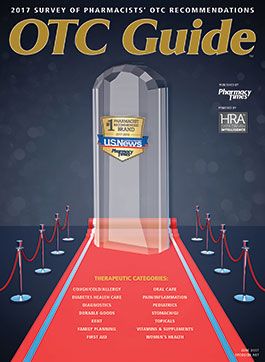Convenience Is King, Affordability Is Queen, but Personalization Remains Divine
At more than 260 million users strong, nearly 9 of every 10 Americans use OTC medications on a regular basis.
Why We All Love OTC Medications
At more than 260 million users strong, nearly 9 of every 10 Americans use OTC medications on a regular basis.1 With more than 2.9 billion trips annually to purchase OTC products, they are a staple among consumer goods.2 And why wouldn’t they be? OTC products are readily accessible at pharmacies gas stations, hotel pantries, and vending machines. In addition, OTC medications are substantially more affordable than their prescription alternatives, often costing one-tenth or less, and treat hundreds (if not thousands) of common and not-so-common ailments. Their influence continues to grow as new products hit the market and prescription-to-OTC switches occur every year.
What Health Care Consumers Want Most Is Personalization
Not surprisingly, convenience and affordability remain prominent on the list of consumer-friendly attributes. However, Deloitte recently published a study that analyzed results from a consumer survey about what health care consumers want most, with (perhaps) one surprising result: personalization still far outweighs convenience and affordability for what consumers demand most from their health care.3 In fact, personalization ranked roughly 3 times higher in importance than other categories and was especially pronounced in the Hispanic and elderly populations.3 The 2015 survey found that “Consumers want to be heard, understood, and given clear directions through a personalized health care experience.”3
The Trifecta: OTC Products Can Meet All 3 Consumer Demands With Pharmacists’ Help
Unlike vending machines, pharmacists in open-door retail settings can provide all 3 of the highest-ranked consumer demands: convenience, affordability, and personalization. We play a unique and highly advantageous roll in the community, often operating as the experts in OTC products and their appropriate use in addition to clearly communicating the risks, benefits, and anticipated effectiveness of these products. Keep this in mind when you see confused customers in your aisles or when they ask you to step out of your prescription workflow to help find a product. Spend the time with them that they deserve when describing their child’s cough, rash, fever, or runny nose. Personalize your response based on their inquiry and feedback. Know when to refer them to a primary care provider or emergency department.
Most of all, know your products. Nothing is more frustrating to a patient-consumer who asks for a recommendation or specific advice about an OTC product than a blank stare on the expert’s face. This 2017 OTC Guide is a great resource for staying patient-ready. We hope you enjoy it.
Troy Trygstad, PharmD, PhD, MBA, is vice president of pharmacy programs for Community Care of North Carolina, which works collaboratively with over 1800 medical practices to serve more than 1.6 million Medicaid, Medicare, commercially insured, and uninsured patients. He received his PharmD and MBA degrees from Drake University and a PhD in pharmaceutical outcomes and policy from the University of North Carolina. He also serves on the board of directors for the American Pharmacists Association Foundation and the Pharmacy Quality Alliance.
References
- Booz & Co. The value of OTC medicine to the United States. Your Health at Hand/Consumer Healthcare Products Association website. yourhealthathand.org/images/uploads/The_Value_of_OTC_Medicine_to_the_United_States_BoozCo.pdf. Published January 2012. Accessed May 16, 2017.
- Statistics on OTC Use. Consumer Healthcare Products Association website. chpa.org/MarketStats.aspx. Accessed May 16, 2017.
- What matters most to the health care consumer? insights for health care providers from the Deloitte 2016 Consumer Priorities in Health Care Survey. deloitte.com website. https://www2.deloitte.com/us/en/pages/life-sciences-and-health-care/articles/us-lshc-consumer-priorities-promo.html. Accessed May 16, 2017.

